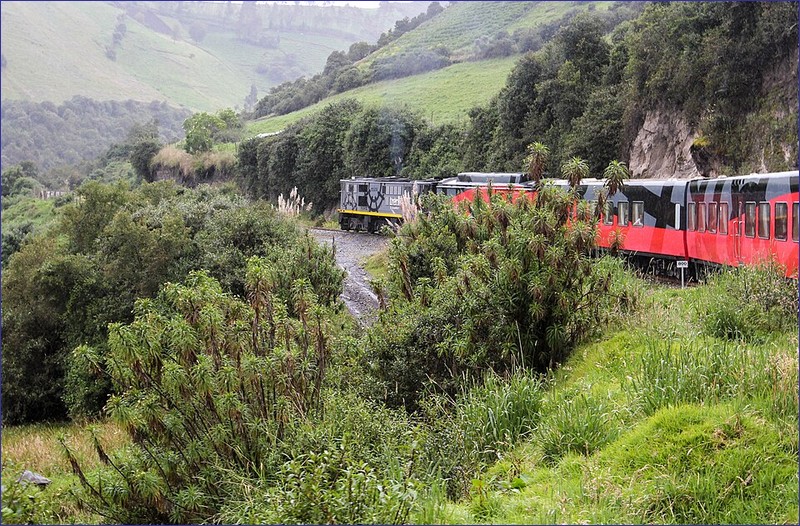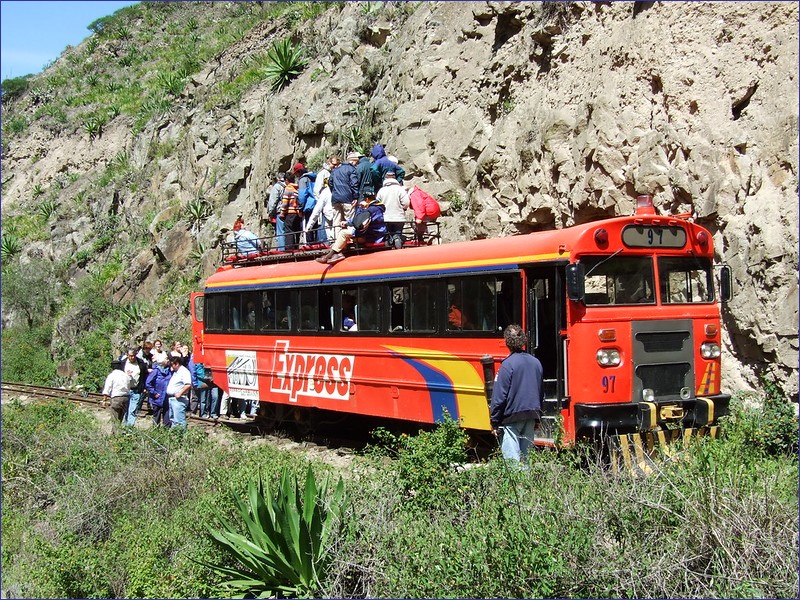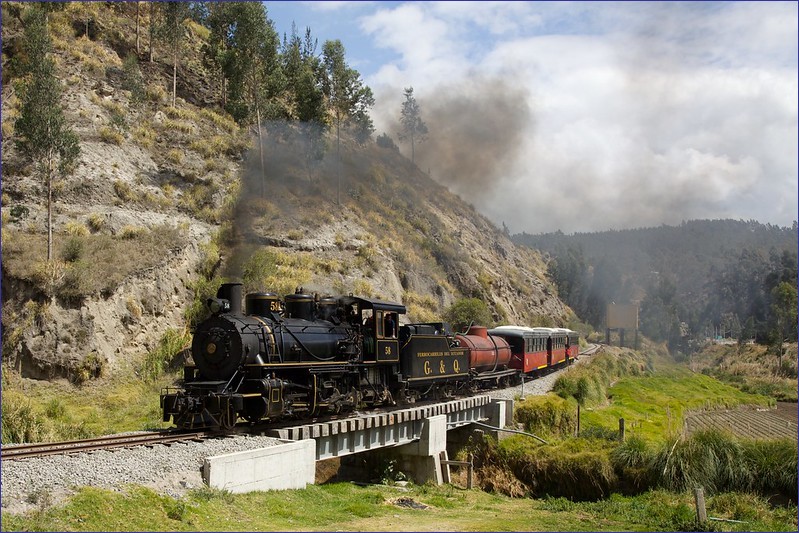Train travel in Ecuador is currently impossible. Ecuador has a railway network totaling 965 kilometers in length. For a long time, the railway system functioned quite well, but like in many other South American countries, it gradually declined, with natural disasters caused by the El Niño phenomenon completing the destruction. By the second decade of the 21st century, only a few tourist trains remained in operation, including the very popular Tren Crucero. Authorities had announced plans to restore the railway lines and revive passenger services. However, in 2020 the pandemic hit, and all train services were suspended. As far as I know, they still have not resumed.
In May 2025 the authorities announced plans to resume Nariz del Diablo trains in the future. There are also plans to launch a train “Tren de la Fábrica” between Ibarra and Andrade Marín (13 km).
Last updated: 12.06.2025
This article contains brief information about the tourist trains that operated before the COVID-19 pandemic. Currently, no trains are running.
Railway map of Ecuador (Wikimedia Commons)
Tren Crucero
Tren Crucero was a luxury tourist train operating along nearly all active segments of Ecuador’s rail network. A ride on the train was one of the country’s major tourist attractions. The trip offered a comfortable journey along the Quito – Guayaquil (Durán) route, lasting four days and nights and covering around 450 kilometers. The tour included an extensive program and hotel accommodations.
The train was composed of four modern, air-conditioned first-class coaches. On certain segments, it was pulled by a restored steam locomotive; on others, by a diesel locomotive. In addition to the first-class coaches, the train had a dining car, a lounge car, and an observation car—perfect for photographers eager to capture the majestic Andes rising along the route. The train had a capacity of 54 passengers. Prices were very high.

Machachi Festivo
This train ran Thursday through Sunday and on holidays on the Quito – Machachi – Quito route. Departure from Quito was at 8:15 a.m., return at 4:15 p.m. The route length was 40 kilometers. The Standard class included a bilingual guide’s lecture and a $1 coffee voucher redeemable at a café in Machachi. The Standard Plus class offered air conditioning and more comfortable seating.
Camino al Boliche
Also operating Thursday through Sunday and on holidays, this train followed the Quito – Boliche – Quito route. Departure at 8:15 a.m., return at 4:15 p.m. The route covered 59 kilometers. It was likely the same trainset as Machachi Festivo, though marketed under a different name.
Páramo Infinito
This train ran on Saturdays, Sundays, and holidays on the Machachi – Boliche – Machachi route. Departure from Machachi at 10:30 a.m., return at 2:30 p.m. Only Standard class was available. Distance: 19 kilometers.
Avenida de los Volcanes
Operating Thursday through Sunday and on holidays, this train ran from Quito – Latacunga – Quito. Departure at 8:00 a.m., return at 6:00 p.m., covering a distance of 98 kilometers. The train was a modernized railcar operating on the same railway line as the previously mentioned services.
Tren de la Libertad
This train ran Wednesday through Sunday and on holidays between Ibarra – Salinas – Ibarra. Departure from Ibarra at 10:30 a.m., return at 3:00 p.m. Additionally, on Fridays through Sundays and holidays, a railcar departed at 8:00 a.m. and returned at 12:30 p.m. Route length: 30 kilometers.
Sendero de Arrozales
Running Thursday through Sunday and on holidays, this route covered Durán – Yaguachi – Durán. Departures were at 9:00 a.m. and 1:15 p.m.; returns at 12:45 p.m. and 5:00 p.m. The schedule listed two trains at 9:00 a.m.—one with coaches, the other a railcar. Distance: 22 kilometers.
Los Baños del Inca
This train operated on the El Tambo – Coyoctor – El Tambo route. Departures from El Tambo were at 9:30 a.m. and 11:00 a.m. on Wednesdays, Thursdays, and Fridays, and at 12:30, 2:30, and 4:30 p.m. on weekends and holidays. The route was only 3.5 kilometers long, and the round trip (with time for sightseeing) lasted about 1.5 hours. Service was provided by a railcar.
Sendero los Ancestros
Operating on the Riobamba – Colta – Riobamba route, this train covered 25 kilometers. The journey, including sightseeing, lasted 4 hours and 14 minutes. Operated by a railcar.

Tren de la Dulzura
A retro-style train operated on the Guayaquil (Durán) – Bucay route. The actual train ride was relatively short, but the full tour, which included performances and plantation visits, took 10 hours round trip. Distance: 30 kilometers. A bus transfer to tourist attractions was included in the ticket.
Train travel in Ecuador – Nariz del Diablo
This famous train ran between Alausi and Sibambe, returning to Alausi. Departures from Alausi were at 8:00 a.m., 11:00 a.m., and 3:00 p.m. from Tuesday to Sunday and on holidays. The train had both Standard and Standard Plus cars. Additionally, Friday to Sunday and on holidays, a railcar operated with a 9:00 a.m. departure. The route covered just 12 kilometers, but it was the most scenic and dramatic section of a much longer line, known for its winding paths and breathtaking views.
The Nariz del Diablo (“Devil’s Nose”) was world-famous as one of the most terrifying railway routes. For several years, riding on the roof was banned after excited Japanese tourists, busy taking photos, failed to notice the train entering a tunnel. A ride on this train was a must-do for any railway enthusiast visiting Ecuador.
Related articles:
Railways in Americas by country
